On the Lives of Ruth Krauss and Crockett Johnson:
My Full Q & A with Author Philip Nel
 August 29th, 2012 by jules
August 29th, 2012 by jules
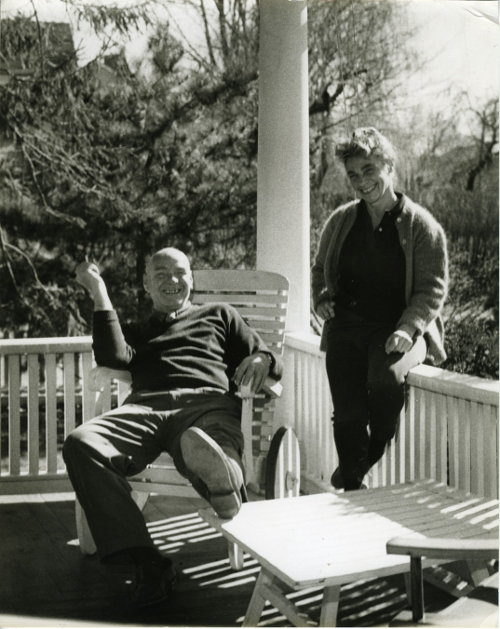
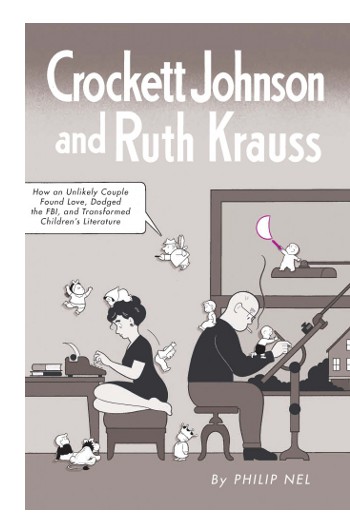 Last week at Kirkus, an abbreviated version of a Q&A I conducted with author, professor, and blogger Philip Nel was posted over at the Kirkus Book Blog Network. We discussed his latest book, a double biography, titled Crockett Johnson and Ruth Krauss: How an Unlikely Couple Found Love, Dodged the FBI, and Transformed Children’s Literature.
Last week at Kirkus, an abbreviated version of a Q&A I conducted with author, professor, and blogger Philip Nel was posted over at the Kirkus Book Blog Network. We discussed his latest book, a double biography, titled Crockett Johnson and Ruth Krauss: How an Unlikely Couple Found Love, Dodged the FBI, and Transformed Children’s Literature.
This week here at 7-Imp, I’ve got the interview in its entirety, along with some images from the book. Many thanks to Phil for taking time from his busy schedule to chat with me about this fascinating book.
Let’s get right to it …
Jules: Part of your book’s sub-title is “How an Unlikely Couple…Transformed Children’s Literature.” Given their influential work across multiple disciplines (children’s lit, comics, graphic design, fine arts), what do you think their most enduring contributions are to the field of children’s literature?
Philip: Crockett Johnson’s Harold and the Purple Crayon is the most succinct and profound distillation of imaginative possibility ever created. Understandably, it’s inspired many other children’s writers.

Stewart I. Edelstein, Executor. All Rights Reserved.

In his Caldecott acceptance speech for Jumanji, Chris Van Allsburg actually thanked “Harold and his Purple Crayon.” The influence of Harold emerges in the pencil-wielding protagonists of Anthony Browne’s Bear Hunt and Allan Ahlberg and Bruce Ingman’s The Pencil. Harold’s creativity also animates the crayon-carrying title characters of Patrick McDonnell’s Art and Thacher Hurd’s Art Dog.

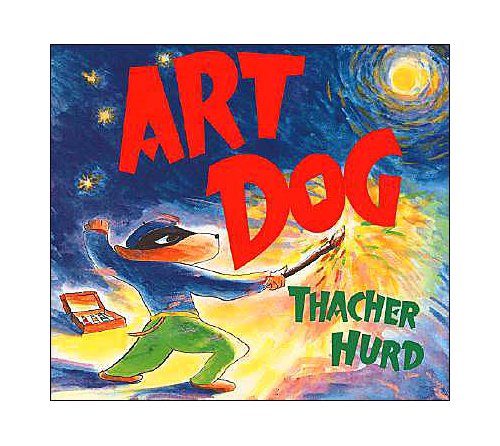
Harold shows us how art can create a world. He demonstrates that, to create a universe, all you need is a blank piece of paper and a crayon. So, of course, many artists find themselves drawn to it and inspired by it.

(Click to enlarge)
Ruth Krauss’s influence has become so pervasive as to be invisible. She didn’t invent spontaneous, loose-tongued children, but she—in her eight books created with Maurice Sendak—did establish for them a place in children’s literature.

Photo courtesy of Maurice Sendak. Used by permission of Maurice Sendak.
After the first Sendak-Krauss collaborations, A Hole Is to Dig (1952) and A Very Special House (1953), many other children’s writers began attempting similar books. The imitators (Joan Walsh Anglund, Phoebe Wilson Hoss) didn’t understand what she and Sendak were doing, and so created books that sentimentalized the unruly Krauss-Sendak child character.
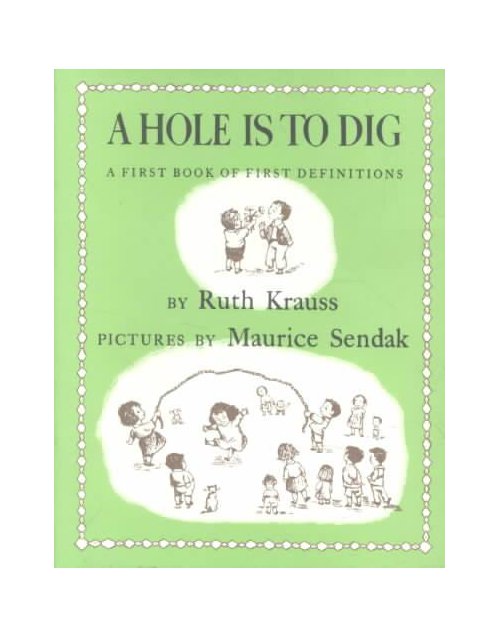
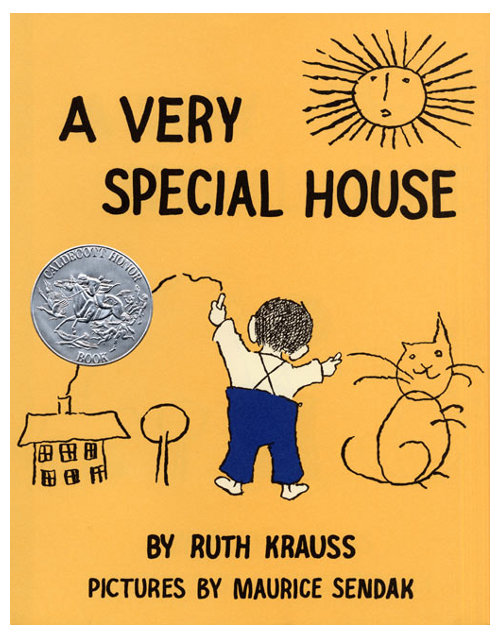
Fortunately, better artists understood and embraced that vital, rebellious spirit of the Krauss-Sendak books: Lane Smith, Laurie Keller, Kevin Henkes.
When you see children’s books featuring outspoken children facing the world on their own terms, you can thank Ruth Krauss and Maurice Sendak.
Jules: Tell me about your research.
Philip: Writing a biography is like assembling a vast puzzle for which you have no box, missing pieces, and no sense of how many pieces you’ll need.
I interviewed over 80 people who knew Johnson and Krauss, including Maurice Sendak, Syd Hoff, Jules Feiffer, and Marc Simont. I visited over three dozen archives and special collections, read everything by or about Johnson and Krauss, and hundreds of additional books and articles.
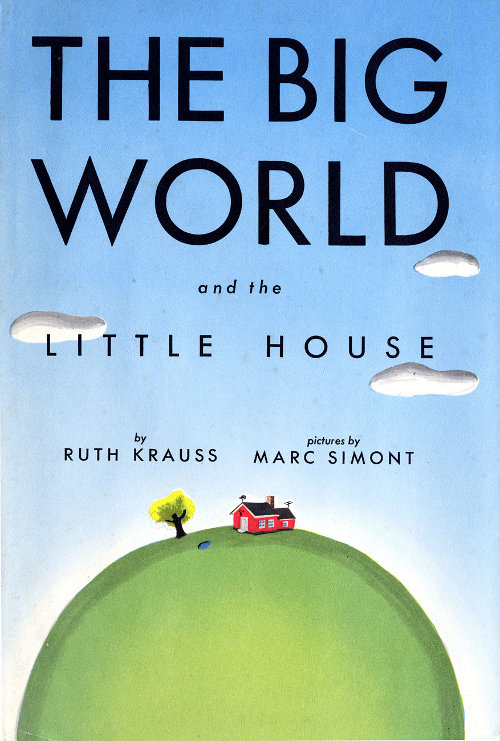
Dodd Research Center, University of Connecticut. Reproduced courtesy of Marc Simont.
Thanks to the Freedom of Information Act, I obtained a copy of Crockett Johnson’s FBI file. (I also learned that, though Krauss is mentioned in his, she lacks a file of her own.) I examined century-old city directories and insurance-company maps of Queens (where he grew up) and Baltimore (where she grew up).
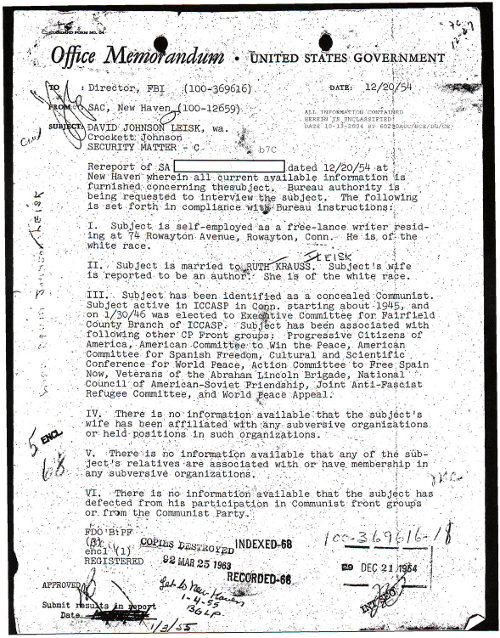
Courtesy of the Freedom of Information Act and the Federal Bureau of Investigation.
(Click to enlarge)
I looked at birth certificates, marriage certificates, census data, property deeds, wills, and photographs. I drove to Denmark, Maine’s Camp Walden, an all-girls camp where Ruth spent two formative summers: there, I found her first published writing in the 1919 issue of Splash, the camp yearbook. I took the ferry to Staten Island to meet 67-year-old Thomas Hamilton, who as 7-year-old Tommy Hamilton starred as Barnaby in the 1946 stage production of Crockett Johnson’s comic strip. He had clippings and the entire unpublished script for the play, all of which he let me copy.

Reprinted with the permission of the Estate of Ruth Krauss,
Stewart I. Edelstein, Executor. All Rights Reserved.
So, yes, writing a biography is a painstaking, challenging, often plodding process. But it’s also fascinating work. It’s detective work — getting a lead, following it to a new source, finding connections between lives and ideas. I was on a quest, and had to continue until I finished! And I did … a dozen years after I began.
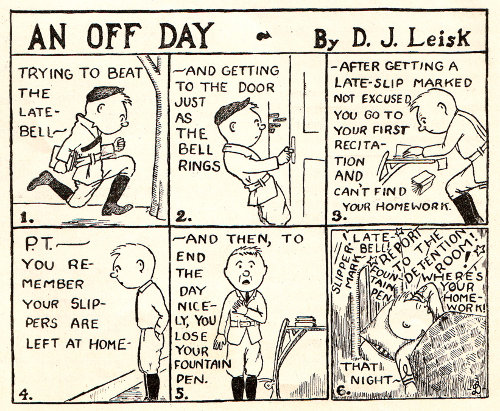
He was 14 when he drew this.
(Click to enlarge)
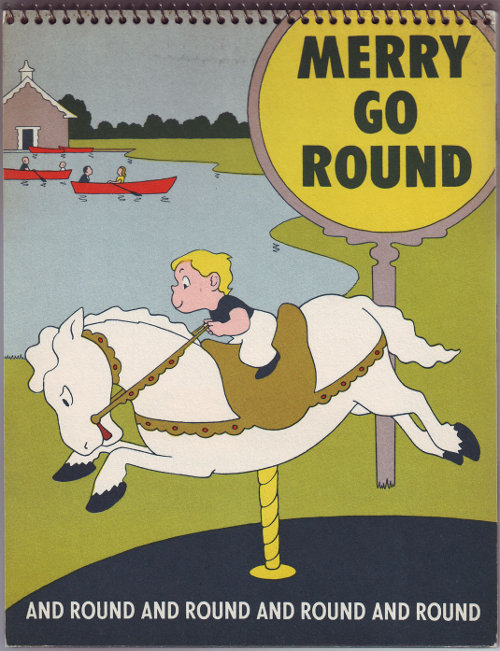

(Harper, 1958). Reprinted with the permission of the Estate of Ruth Krauss,
Stewart I. Edelstein, Executor. All Rights Reserved.
Jules: Tell me what Chris Ware has done on the wonderful book jacket.
Philip: Every time I look at Chris’s beautiful cover, I find something new to admire.
He’s created it in the style of Crockett Johnson — or, in the case of the little girl from I Can Fly (to the left of Ruth’s head), Mary Blair filtered through Crockett Johnson, and, in the case of the Hole Is to Dig kid (sliding down Ruth’s back), Maurice Sendak filtered through Crockett Johnson. Seeing the artistic styles filtered through Johnson—and through Ware’s idea of Johnson—is delightful.
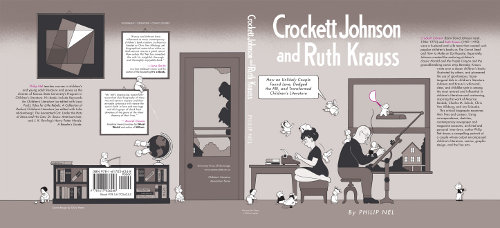
Fans of Johnson and Krauss can play “spot the character” to their hearts’ content. Irene, from Crockett Johnson’s Time for Spring, is on top of Ruth’s head. Ellen and her lion (from Johnson’s two books, Ellen’s Lion and The Lion’s Own Story) sit at the foot of her table. On the spine, The Carrot Seed boy plants a seed. Moving around to the back of the cover, Johnson’s Frowning Prince scowls up at the silhouettes of two FBI agents. Surrounding the ISBN and UPC code, the bookshelves contain their works and works by people important to them: The Diary of a Nobody (Crockett Johnson’s favorite book, a detail my editors removed from the manuscript), Frank O’Hara (Krauss took poetry courses from him), Pythagoras (a tribute to Johnson’s love of mathematics). Appropriately, the Pythagoras volume is at a diagonal angle, creating the hypotenuse of a right triangle!
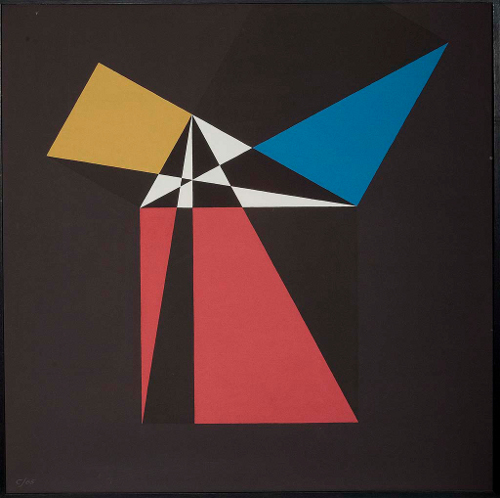
Ruth Krauss, Stewart I. Edelstein, Executor. All Rights Reserved.
(Click to enlarge)
Oh, and if you have the paperback and unfold the back flap, you can see one of Johnson’s paintings.
And then, of course, the entire thing is a panoramic wrap-around cover (fully visible, as I say, only on the paperback). It’s a work of art carefully designed to wrap around the book. Unfolded in full, Ware’s careful attention to detail and many lines of symmetry come into sharper focus. For example, most diagonal lines are at 45º — Johnson’s easel, the houses outside, the FBI agents, the Pythagoras book. If that creates one visual continuity, the frames (window, door, pictures, bookcase) create another. The shades of brown, grey, and black offer a third unifying feature. One of those shades, incidentally, is the precise tone of Harold’s face. A fourth motif is the typeface — Futura, which Johnson used in his comic strip Barnaby and in Krauss’s The Carrot Seed (which he illustrated).
It is SUCH an honor and a privilege to have a cover by the great Chris Ware!
 Jules: What’s next for you?
Jules: What’s next for you?
Philip (pictured right): I have several big projects, only one of which is under contract: The Complete Barnaby. Eric Reynolds and I are co-editing this for Fantagraphics, collecting for the very first time, all ten years (1942-1952) of Crockett Johnson’s classic comic strip. The first volume (of five), encompassing 1942 and 1943, will be out late this fall. It features an Introduction by Chris Ware, design and cover by Daniel Clowes, a short essay by comics scholar Jeet Heer, and an afterword and notes by me.
There are other projects, but I’d prefer to be coy about them until they’re further along or I get a book contract for them.
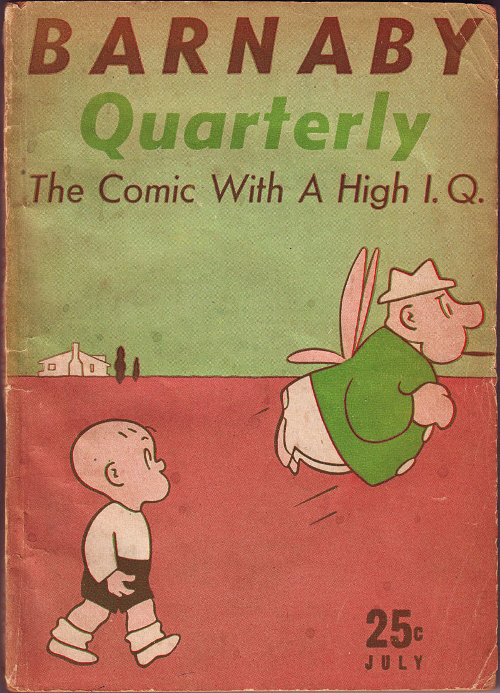
Reprinted with the permission of the Estate of Ruth Krauss,
Stewart I. Edelstein, Executor. All Rights Reserved.
Photo of Philip Nel used with his permission.

As Phil knows, I have been a BARNABY fan since preschool or earlier. I still have a very old orange hardback of collected stories. But only in later years did I learn of the leftist backgrounds of Crockett Johnson (and undoubtedly Ruth as well) –at which point I understood why we had BARNABY in the house (and had the quarterlies as well). And Ruth Krauss and Maurice Sendak: I cannot imagine life without them. SO GLAD to have Phil’s book!
There was something about the simplicity of Crockett Johnson’s drawings and layout that reflected the time period. Less “material stuff” crowding the family’s lives, for one thing. Then, the imagination having room to play in, knowing that something magical yet mundane could occur. No big visual effects. Just a line. And glimmers of more unrevealed happenings off stage. And those lines that invited coloring in! Oh joy!
And once again, loves of picture books – but with no real knowledge of the genre – can come here and learn a thing or three. I have enjoyed books from both Ruth Krauss and Crockett Johnson, but I would never have put them together in my head. DEFINITELY I can see their influence upon later titles, especially in big, simple storylines, with Krauss, and clean, wide-eyed drawings in terms of Johnson. This new book is going to be a treat.
CORRECTION: lovers of picture books, anyway.
wonderful.
Sounds like an interesting book. I’m going to have to add it to my list.
I’ve been so looking forward to this book!
Fascinating stuff! LOVE A Hole is to Dig and have a Harold poster in my upstairs hallway. The Sendak photo is magic, too :).
I love the visuals you allowed us to glance at in this interview. Such a great pair- and their books still ignite our imaginations.
Thans, everyone, for your comments! And thanks to Jules for doing this interview. Hope everyone enjoys the book!
What a great article! This made my day.
Can’t wait to see the book!
Thank you.
Wonderful post! Can’t wait to add this book to my collection.
[…] There is a new biography about the children’s authors and spouses Crockett Johnson and Ruth Krauss – How an Unlikely Couple Found Love, Dodged the FBI, and Transformed Children’s Literature. Great title! Seven Impossible Things Before Breakfast has an interview with its author Philip Nel here. […]
[…] professor, and blogger Philip Nel (August 29, 2012), pictured right, on his double biography, Crockett Johnson and Ruth Krauss: How an Unlikely Couple […]